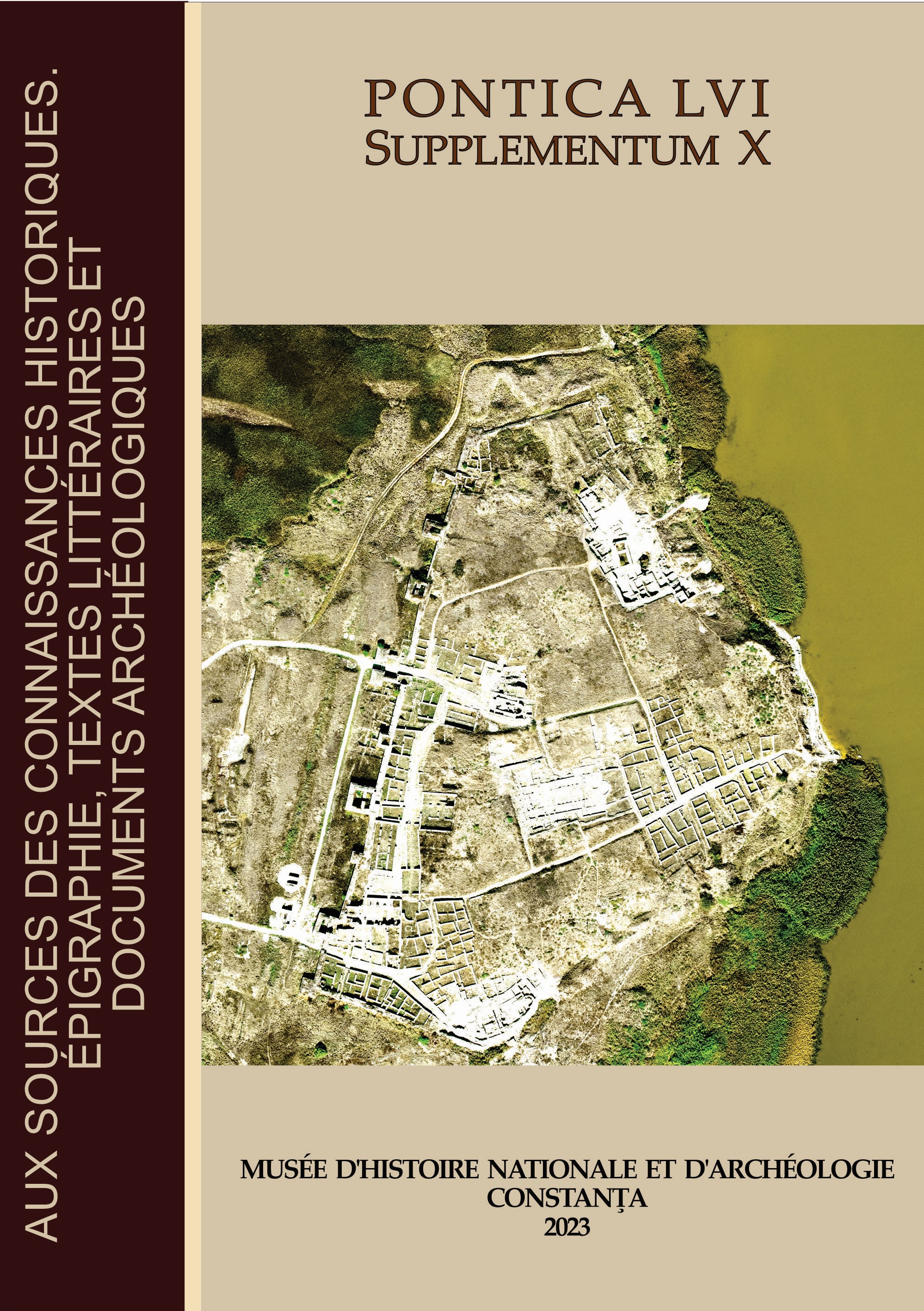Gold Goblet with a Greek Inscription from Migulinskaya on the Don. New Observations
Gold Goblet with a Greek Inscription from Migulinskaya on the Don. New Observations
Author(s): Mikhail TREISTERSubject(s): History, Archaeology, Cultural history, Ancient World
Published by: Muzeul de Istorie Națională și Arheologie Constanța
Keywords: Sarmatians; round-bottomed gold vessels with zoomorphic handles; inscriptions on the vessels made of precious metals; metrology of the gold coins of Rome and the Bosporan Kingdom; toreutics;
Summary/Abstract: The article is devoted to a golden goblet with a Greek inscription from a destroyed burial near the Cossack village of Migulinskaya on the Don. The analysis showed that it was made no earlier than the second quarter of the 1st and hardly later than the beginning of the 2nd century AD in the Cimmerian Bosporus by a craftsman with the Thracian name Tarula for the Sarmatian customer Xebanokos. As a system in which the weight of the goblet was indicated, that of gold Bosporan staters, originally oriented to the standards of the Roman aurei, could have been used. There is every reason to believe that the “48 gold” of the inscription are precisely the weight of the gold used to make the goblet, and not the cost of it. The features of the inscription that we revealed (the presence of a draft incised before applying the punched inscription) give reason to assume that the inscription was incised by a person who knew Greek, and the craftsmen of the goblet, who did not know Greek, probably punched the inscription in his presence. The fact that the name of Xebanokos is written in smaller letters both in the sketch and in the punched inscription hardly gives grounds to believe that the inscription was made in two stages with any significant time span between them.
Journal: Pontica
- Issue Year: 2023
- Issue No: 56 Supp X
- Page Range: 437-452
- Page Count: 16
- Language: English

